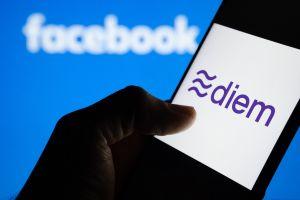Why This Bitcoin-Believing Startup Bets on Facebook’s Diem Instead
While the eyes of many are on major crypto networks like Bitcoin (BTC) and Ethereum (ETH) (and NFTs, of course), financial service provider First Digital Asset Group (FDAG) together with their investors are betting on more centralized, Facebook-backed Diem (formerly – Libra) stablecoin.

“Bitcoin, ethereum, and the rest are not going to be means of payment,” the company’s CEO Ran Goldi told Cryptonews.com.
The arrival of crypto winter in 2018 made the team “think a long and hard about where this world is going.” What Goldi concluded is that he “loves [and] holds” bitcoin, hoping its price gets to the moon, and he would not give his bitcoin away.
And “I’m one of those believers that think that bitcoin is going to reach at least USD 250,000, if not more,” he said, adding that in a case of a major global economic depression, BTC may prove itself as a good store of value, a safe haven.
However, according to Goldi, there is a specific difference between Diem and BTC: while some people are willing to accept BTC, it’s not a mainstream thing yet, the reason being that many are afraid of accepting it as a means of payment.
Meanwhile, stablecoins are the next evolution of money, Goldi argued, saying “Diem is not a revolution, it’s an evolution.” Decentralization will be a future step, but “you probably need to do see blood in the streets before the world goes fully decentralized,” he said.
Diem is focusing on the consumer side, and the organization has massive companies for its members, with millions of users, like Uber and Spotify. Additionally, their coins will be heavily regulated.
Therefore, Goldi concluded,
“Diem is better than bitcoin for payments, but bitcoin is better than Diem if you want to accumulate wealth and store value.”
Not only Diem
This is where FDAG comes in, creating a payments platform that would allow merchants to accept payments using stablecoins and central bank digital currencies (CBDCs), particularly those who are not very tech-savvy, said the CEO. While the end customers are merchants, the way to them is by working with payment service providers (PSPs), gateways, acquirers, and others.
Then, the next step is having the merchants actually use the digital assets, instead of converting them to fiat – not just accept payments, but also make payments to other businesses. Goldi finds that PSPs gateways, and acquirers around the world “should wake up and understand that digital payments are not just a dream, but it’s happening, [and] they need to understand their merchants have to accept those types of payments; otherwise, they’ll become obsolete.”
In February, digital asset storage, transfer, and issuing platform Fireblocks, which is also backed by the oldest bank in the US, New York Mellon Corp., and FDAG announced a wallet and infrastructure for financial institutions to connect to the Diem network to facilitate transactions, enabling their clients to utilize Diem as a payment method within existing consumer experiences.
While the company aims to eventually become stablecoin agnostic, they’re starting with Diem, said Goldi. And while they wait for Diem to launch, the team is working with other undisclosed stablecoins. He said,
“But in the next six months, you will see more stablecoins that we announced support for, together with […] the entity supervising that stablecoin.”
People are “probably still skeptical that Diem would see the light of day,” Goldi told Cryptonews.com, but it’s taking time because “they chose the path less traveled,” which, once the coin gets released, it’s “going to give them a huge edge.” While the project may fail, Goldi doesn’t see that happening. Instead, he sees “a marathon” ahead of it, as it will take a few years for a couple of billion people to start using a stablecoin. “But I think that for something to take a few years, you need to have a lot of financial backing,” he added.
As for Diem’s launch, Goldi doesn’t think they’ll have to wait another year. “Hopefully, […] Diem would launch by the end of this year. And by the end of next year, we would have more than 50% of the market,” he said.
At that point, FDAG may not need to fundraise anymore. Right now, according to the CEO, they have enough capital raised from their investors. The company has raised more than USD 21m from investors such as TargetGlobal, Yariv Gilat, and Sir Ronald Cohen.
As for Diem’s competitors, Goldi named Celo as an interesting one. The most popular stablecoins today are tether (USDT) and USD coin (USDC), that are mostly used for crypto trading.
Meanwhile, regulators are also keeping a close eye on Diem. For example, as reported this past February, the European Central Bank wants veto power on the launch of stablecoins such as Facebook’s Diem in the eurozone and a greater role in their supervision. The ECB said issuers of stablecoins should be subject to “rigorous liquidity requirements” similar to those applied to money market funds, including significant cash reserves, to help them withstand large client outflows.
____
Learn more:
– Stablecoins Might Be Better Than Bitcoin For Payments, But Maybe Not For Long
– Stablecoins May ‘Penetrate Non-Crypto Markets’ & Surpass USD 100B in 2021
– Stablecoins May Threaten EU Market Integration And Interoperability – ECB
– Facebook’s Libra Rebrand Hits Another Name-Change Snag as UK Diem Lawyers up
– Stablecoins Get Another Headache In US, Ethereum Camp Feels Attacked Too
– Visa Makes Stablecoin Push With Circle’s USDC




